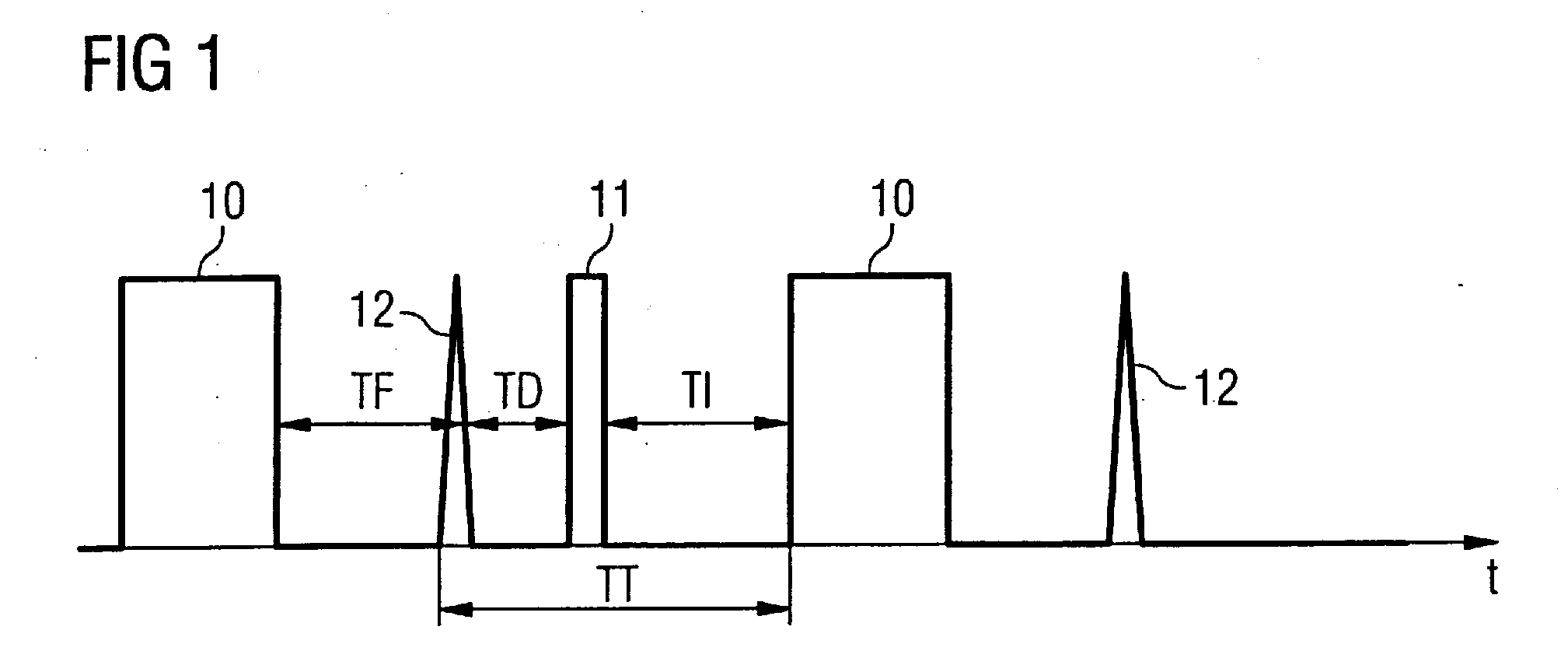Heart imaging with adaptive inversion time
a heart and inversion time technology, applied in the field of heart imaging with adaptive inversion time, can solve the problem that it is not possible to fill the entire raw data space, and achieve the effect of improving the contrast of inversion-prepared imaging methods and a longer time period
- Summary
- Abstract
- Description
- Claims
- Application Information
AI Technical Summary
Benefits of technology
Problems solved by technology
Method used
Image
Examples
Embodiment Construction
[0014]A sequence diagram is schematically shown in FIG. 1. The acquisition of the MR signals ensues during the blocks 10. In one exemplary embodiment of the invention the imaging sequence is a spoiled gradient echo sequence with an inversion pulse that is schematically represented with reference character 11. The imaging sequence is a segmented imaging sequence, such that only N RF pulses with the flip angle α are respectively radiated during the blocks 10. As described in detail further below, the flip angles α are not constant, rather they become larger within a block 10. Furthermore, the R-spike 12 of the EKG signal is shown in FIG. 1. This R-spike serves as a trigger for the selection of the point in time for switching of the inversion pulse and the RF excitation pulses. The time spans shown in FIG. 1 are defined as follows. The time span TF is the fill time after the signal readout until the next R-spike. The time span TD runs from the R-spike until the switching of the RF inve...
PUM
 Login to View More
Login to View More Abstract
Description
Claims
Application Information
 Login to View More
Login to View More - R&D
- Intellectual Property
- Life Sciences
- Materials
- Tech Scout
- Unparalleled Data Quality
- Higher Quality Content
- 60% Fewer Hallucinations
Browse by: Latest US Patents, China's latest patents, Technical Efficacy Thesaurus, Application Domain, Technology Topic, Popular Technical Reports.
© 2025 PatSnap. All rights reserved.Legal|Privacy policy|Modern Slavery Act Transparency Statement|Sitemap|About US| Contact US: help@patsnap.com



